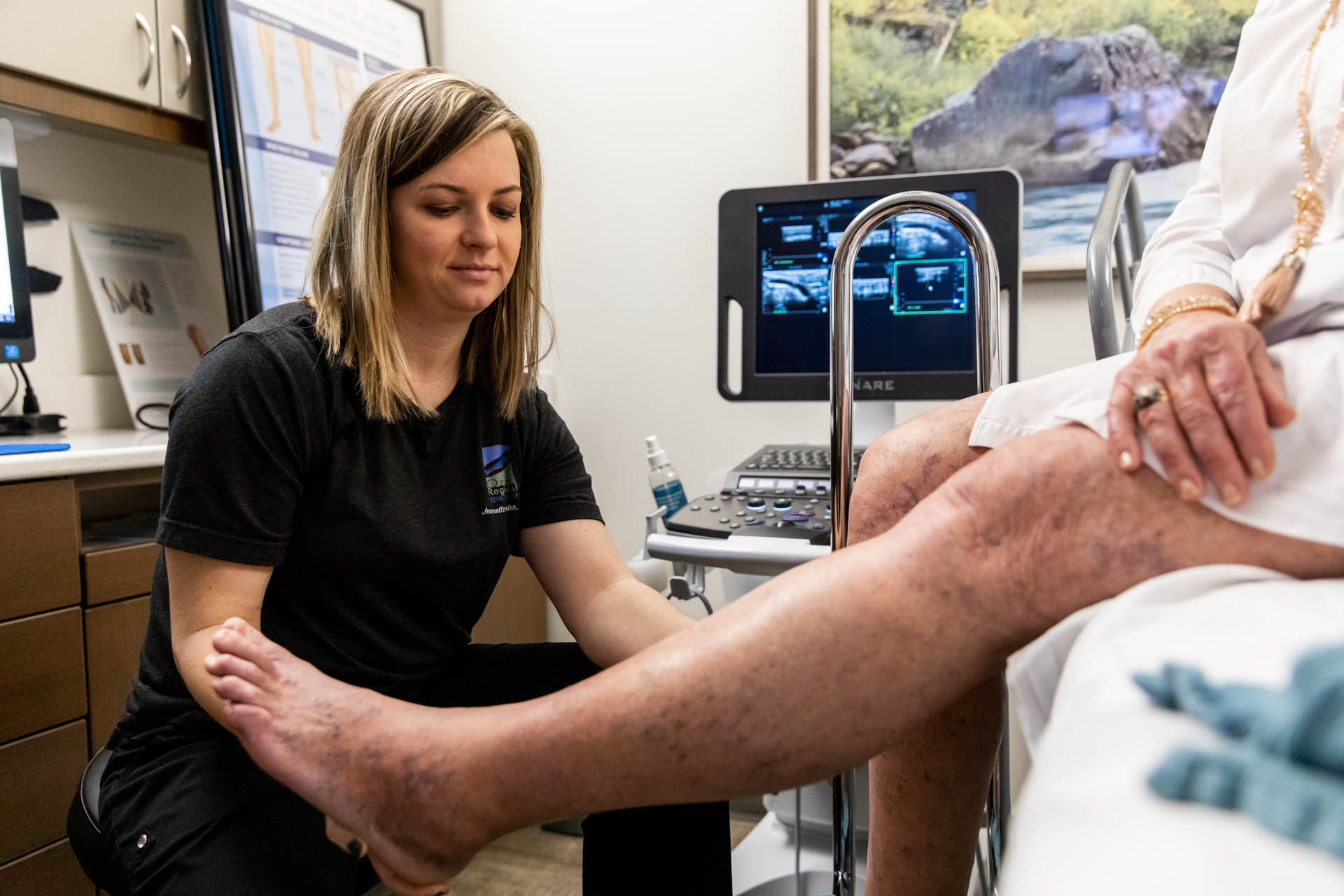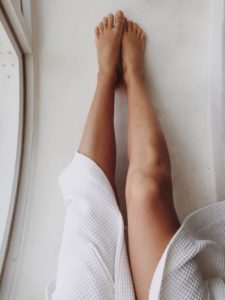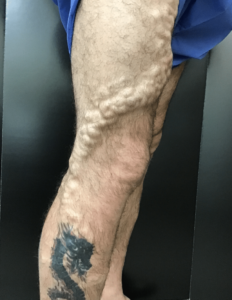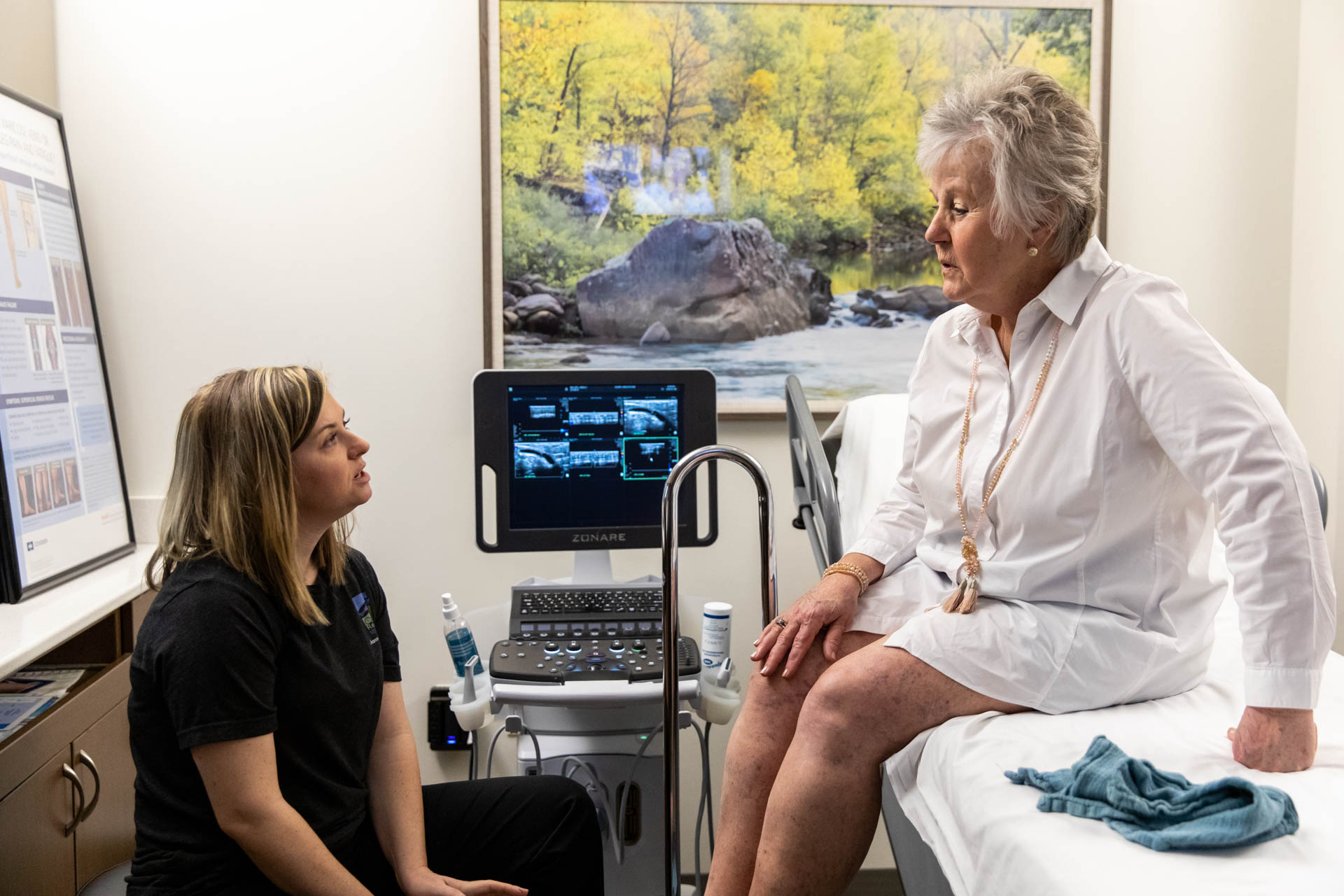If you’re experiencing discomfort and aren’t sure when to get a second opinion about vein treatments, it’s important you know what to look for.
That is why the vein care & vascular specialists at the Ozark Regional Vein & Artery Center in Rogers created this blog!
Here are 3 common signs and symptoms that something is wrong with your veins and that you should reach out to an incredible vascular specialist in Rogers here at the Ozark Regional Vein & Artery Center.
3 Signs You Should Visit a Vascular Specialist in Rogers
1. Night Cramps
One of the first symptoms of venous disease is leg cramping. It’s your veins’ job to transport blood back to your heart once your heart pumps it throughout your body. When your veins start failing in this task, also known as venous insufficiency, it can lead to a variety of symptoms. Leg cramping is one of the first and the most common.

At night when you’re laying in bed for an extended period, the slowing or stagnant blood flow as a result of venous insufficiency can result in increased discomfort and site-specific pain. The exact reason for this isn’t apparent, but there is a direct correlation between the onset of night-time leg cramps and venous disease.
That said, cramping has numerous causes. Muscle overexertion, dehydration, strain, or holding a position too long—all these causes are just as likely the reason for your leg cramps.
If you’ve been on your feet all day and when you plop down for bed, you notice leg pain, it’s not reasonable to assume the presence of venous insufficiency. It’s essential to think critically about your body’s health. So, if you’re noticing that you’re frequently feeling leg cramps at night as you try to go to sleep, no matter what you’ve been doing, that’s something to mention to your healthcare provider or a vascular specialist.
For more information, consider using our virtual vein screening tool to take an active role in your vein health!
2. Restless Legs

A frequent by-product of venous insufficiency is restless legs or Restless Leg Syndrome (RLS), often acting as a compounded version of symptomatic leg cramping. Characterized by the uncontrollable urge to shake or move your legs, RLS often manifests in the evenings and can lead to incredible difficulty falling asleep or staying asleep. RLS sufferers also report feeling tingling, itching, and pins-and-needles sensations in their legs.
Though various issues can cause RLS, not purely problems with your veins, venous insufficiency can lead to restless legs as the faltering blood valves cause blood to pool in the legs and create discomfort.
Just as with leg cramps, it’s important not to overanalyze and start seeing issues where none exist. The occasional urge to bounce or shake your leg to distract yourself or vent extra energy is normal. If the urge is significantly interfering in your life, though, you should consult your healthcare provider.
The Ozark Regional Vein & Artery Center also offers a virtual vein screening tool to schedule a consultation and take charge of your vein health.
3. Painful Varicose Veins

Varicose veins are one of the most common signs of broader venous insufficiency. Blood that’s not being pumped back to the heart begins to pool or reflux in the veins of your legs and ankles, leading to discolored, bulging varicose veins that protrude against the skin.
The CEAP (Classification, Etiology, Anatomy, and Pathophysiology) is an official standard of classification, followed by vein experts across the country, to classify the severity of your vein issues on a scale of 0-6. C0-C1 are cosmetic issues with virtually no meaningful health effects, and stages C2 and higher are more serious health concerns of increasing severity.
Even though the development of varicose veins is stage C2 of the CEAP scale, there is a common misconception that varicose veins are benign and purely a cosmetic concern. While varicose veins are a natural part of growing older and not always an immediate problem, they can cause leg pain and achiness and become an ongoing health issue if left untreated.
Check out other misconceptions about varicose veins→
Though their removal isn’t always necessary, varicose veins may start forming as early as your 20s and indicate other serious issues. Thankfully, if you’re dealing with uncomfortable or painful varicose veins, you have a large selection of treatments for varicose veins and venous reflux with the vascular specialist in Rogers at the Ozark Regional Vein & Artery Center.
Come to Vascular Specialists in Rogers For Your Second Opinion
If you’re unsure when to get a second opinion about vein treatments, don’t wait. No matter if you’ve been dealing with vascular issues or your care has fallen through the cracks, come to the Ozark Regional Vein & Artery Center in Rogers. Whatever your vein issue, we will guide you toward lasting wellness solutions.
After all, helping people is what we do, and it is our mission to provide the people of Northwestern Arkansas and beyond with the absolute best care possible. Our expertise and focus on patient education help us to achieve tangible results every time.
Take the first step on the road to recovery with our Virtual Vein Screening Tool or by scheduling a consultation.
Sign up for our newsletter to be notified of our free public events and other practice specials!

